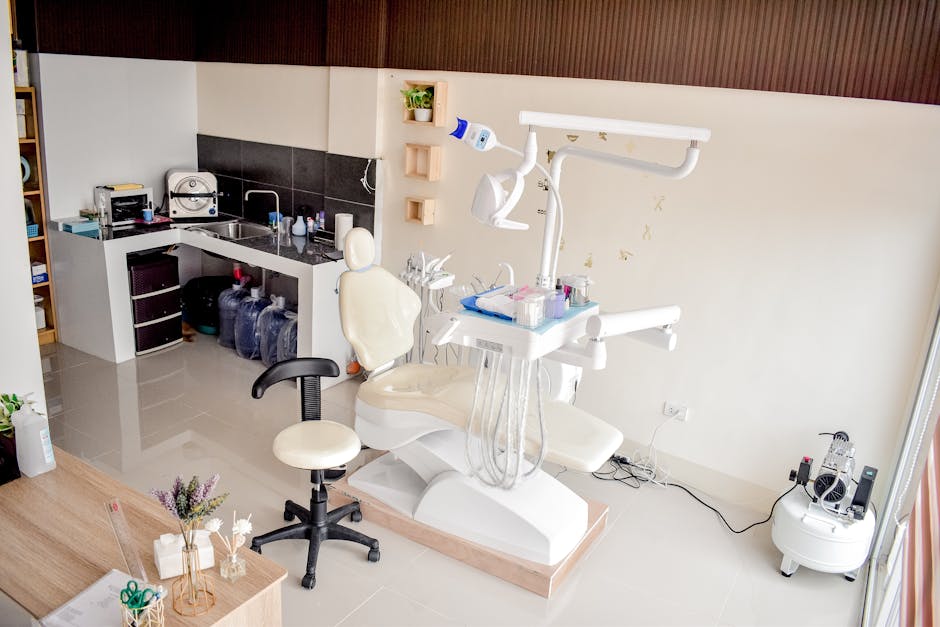The Ultimate Guide to Ergonomic Furniture: Creating Healthier, More Productive Workspaces
“In today's workplace, ergonomic furniture has evolved from a luxury to a necessity. This comprehensive guide explores how properly designed chairs, desks, and accessories can dramatically reduce physical strain, prevent workplace injuries, and increase productivity. Learn how to select the right ergonomic solutions for your organization and create workspaces that support employee wellbeing and performance. ”

The Ultimate Guide to Ergonomic Furniture: Creating Healthier, More Productive Workspaces
In today's fast-paced work environment, the importance of ergonomic furniture has evolved from a nice-to-have perk to an essential component of workplace design. As organizations prioritize employee wellbeing and productivity, facility managers, HR professionals, and IT leaders are increasingly recognizing that the physical workspace plays a crucial role in supporting these goals. Properly designed ergonomic furniture can dramatically reduce physical strain, prevent workplace injuries, and create an environment where employees can perform at their best.

Why Ergonomic Furniture Matters
The impact of poorly designed furniture extends far beyond temporary discomfort. As Dr. David Perna of Back and Body Medical explains, "Makeshift setups can cause a laundry list of problems, including back, shoulder, and wrist pain." These issues can lead to decreased productivity, increased absenteeism, and even long-term health problems for employees.
Dr. Marc Agulnick, an orthopedic surgeon affiliated with NYU Winthrop Hospital, reinforces this point: "If you're sitting for a long period of time in one position that's not natural or a bad position from a postural standpoint, over time, that's going to break down your spine."
The benefits of investing in ergonomic furniture include:
- Reduced physical strain and discomfort: Properly designed furniture supports natural body positions and movements, reducing the risk of musculoskeletal disorders.
- Increased productivity: When employees are physically comfortable, they can focus better on their work without constant distraction from pain or discomfort.
- Lower healthcare costs: Organizations often see reduced workers' compensation claims and healthcare expenses related to workplace injuries.
- Improved employee satisfaction and retention: Demonstrating a commitment to employee wellbeing through ergonomic workspaces can boost morale and reduce turnover.
Essential Ergonomic Furniture Components
Ergonomic Chairs
The chair is perhaps the most critical piece of ergonomic furniture, as many employees spend the majority of their workday seated. A high-quality ergonomic chair should provide:
- Adjustable seat height: Allowing users to position their feet flat on the floor with thighs parallel to the ground
- Lumbar support: Supporting the natural curve of the lower back
- Adjustable armrests: Enabling proper positioning to reduce shoulder and neck strain
- Seat depth adjustment: Accommodating different body sizes for optimal thigh support
- Breathable materials: Preventing heat buildup during extended sitting periods
Companies like Steelcase offer chairs designed with these principles in mind. Their Gesture chair, for example, is highly adjustable to accommodate a wide range of body types and working positions.
Height-Adjustable Desks
Sit-stand desks have gained significant popularity as research continues to highlight the dangers of prolonged sitting. These desks allow employees to alternate between sitting and standing throughout the day, which can:
- Reduce back pain and discomfort
- Improve energy levels and focus
- Decrease the risk of cardiovascular disease and other health issues associated with sedentary behavior
When selecting height-adjustable desks, consider:
- Adjustment range: Ensuring the desk can accommodate both shorter and taller employees
- Adjustment mechanism: Electric motors offer the smoothest and most convenient adjustment
- Stability: The desk should remain stable at all heights, especially when supporting multiple monitors
- Surface area: Providing adequate space for necessary equipment and materials
Monitor Arms and Stands
Proper monitor positioning is essential for preventing neck strain and eye fatigue. Ergonomic monitor arms allow for:
- Flexible positioning: Adjusting the height, distance, and angle of screens to maintain proper viewing angles
- Space efficiency: Freeing up desk space by elevating monitors
- Multiple monitor support: Accommodating various configurations for different work requirements
Keyboard Trays and Ergonomic Mice
These accessories help maintain proper wrist and arm positioning:
- Adjustable keyboard trays: Allowing for negative tilt to keep wrists in a neutral position
- Ergonomic keyboards: Split designs that promote a more natural hand position
- Vertical mice: Reducing pronation of the forearm to decrease strain

Implementing Ergonomic Solutions in Your Workplace
Assessment and Planning
Before investing in new furniture, conduct a thorough assessment of your current workspace and employee needs:
- Survey employees about existing discomfort or pain points
- Consult with ergonomics experts to identify specific issues in your workspace
- Develop a phased implementation plan that prioritizes high-risk areas or employees with existing issues
Customization and Adjustability
One size does not fit all when it comes to ergonomic furniture. As ergoCentric, a leading manufacturer of ergonomic seating, notes: "Using our modular manufacturing system, ergoCentric has been fitting virtually 100% of office workers with ergonomically correct seating for 30 years."
The key is to provide furniture that can be adjusted to fit individual body types and work preferences. This may include:
- Chairs with multiple adjustment points
- Desks with programmable height settings
- Monitor arms with a wide range of motion
- Accessories that can be positioned according to individual needs
Training and Education
Even the best ergonomic furniture will be ineffective if employees don't know how to use it properly. Implement a comprehensive training program that includes:
- Proper chair adjustment: Teaching employees how to set up their chairs for optimal support
- Desk height guidelines: Providing guidance on appropriate sitting and standing heights
- Monitor positioning: Demonstrating correct screen placement to reduce eye and neck strain
- Movement reminders: Encouraging regular position changes and breaks
Ongoing Support and Evaluation
Ergonomic implementations should be viewed as ongoing processes rather than one-time investments:
- Regular check-ins: Schedule follow-ups to ensure furniture is being used correctly
- Adjustment assistance: Provide support for employees who need help fine-tuning their setups
- Feedback mechanisms: Create channels for employees to report issues or request additional accommodations
- Measurement of outcomes: Track metrics like reduced discomfort reports, decreased absenteeism, and improved productivity
Special Considerations for Different Work Environments
Remote and Hybrid Workspaces
With the rise of remote and hybrid workplace models, organizations need to consider how to support ergonomics beyond the traditional office:
- Home office stipends: Providing financial support for employees to purchase ergonomic furniture for their home workspaces
- Equipment loans: Allowing employees to borrow company-owned ergonomic chairs or accessories
- Virtual ergonomic assessments: Offering remote evaluations of home office setups
- Clear guidelines: Developing resources that help remote workers create ergonomic workspaces at home
Educational Institutions
Schools and colleges face unique challenges in implementing ergonomic solutions:
- Adjustable furniture for diverse age groups: Providing options that work for students of different sizes
- Flexible classroom arrangements: Incorporating various seating options to accommodate different learning styles and physical needs
- Technology integration: Ensuring that computer labs and digital learning spaces are ergonomically designed
Healthcare Settings
Healthcare environments require specialized ergonomic considerations:
- 24/7 operations: Providing durable furniture that can withstand continuous use
- Infection control: Selecting materials that can be easily cleaned and disinfected
- Patient interaction: Designing spaces that accommodate both provider comfort and patient access

The ROI of Ergonomic Furniture
While the initial investment in high-quality ergonomic furniture may be significant, the return on investment can be substantial:
Reduced Workers' Compensation Claims
According to various studies, ergonomic interventions can reduce workers' compensation claims related to musculoskeletal disorders by 30-50%. For large organizations, this can translate to hundreds of thousands of dollars in savings annually.
Increased Productivity
Research indicates that properly designed workspaces can increase productivity by 15-25%. This improvement comes from:
- Reduced time lost to discomfort and pain: Employees spend less time adjusting positions or taking breaks due to physical strain
- Improved focus and concentration: Physical comfort allows for better cognitive performance
- Fewer errors: Reduced fatigue leads to higher accuracy in work tasks
Enhanced Talent Attraction and Retention
In competitive job markets, ergonomic workspaces can be a differentiating factor:
- Demonstrating employee value: Showing potential and current employees that their wellbeing is a priority
- Supporting diverse needs: Accommodating employees of all body types and physical requirements
- Creating a positive workplace culture: Contributing to an overall environment of care and support
Future Trends in Ergonomic Furniture
The field of ergonomic design continues to evolve, with several emerging trends:
Integration with Technology
Smart furniture that can:
- Track usage patterns and suggest position changes
- Automatically adjust to individual user preferences
- Integrate with wellness apps to promote healthy work habits
Sustainable Materials and Manufacturing
Eco-friendly approaches that:
- Utilize recycled or renewable materials
- Reduce chemical emissions for better indoor air quality
- Extend product lifecycles through modular design and repairability
Biophilic Elements
Incorporation of natural elements:
- Materials that mimic natural textures and patterns
- Integration with plants and natural light
- Designs that support connection with nature for reduced stress
Conclusion: Creating a Culture of Ergonomic Awareness
Implementing ergonomic furniture is just one component of creating a workplace that truly supports employee wellbeing. To maximize the benefits, organizations should foster a broader culture of ergonomic awareness:
- Lead by example: Ensure management uses and advocates for proper ergonomic setups
- Incorporate into wellness initiatives: Make ergonomics part of overall employee health programs
- Celebrate successes: Share positive outcomes and improvements resulting from ergonomic interventions
- Continuous improvement: Regularly reassess and update ergonomic strategies based on new research and technologies
By taking a comprehensive approach to ergonomic furniture and workplace design, organizations can create environments where employees not only avoid injury and discomfort but truly thrive. The investment in quality ergonomic solutions pays dividends in employee health, satisfaction, and productivity—making it one of the most impactful decisions facility managers and HR professionals can make for their organizations.
Remember that ergonomic needs are highly individual, and the most successful implementations are those that provide options and adjustability while educating employees on how to create their optimal setup. With the right furniture, training, and ongoing support, you can transform your workplace into a model of ergonomic excellence.